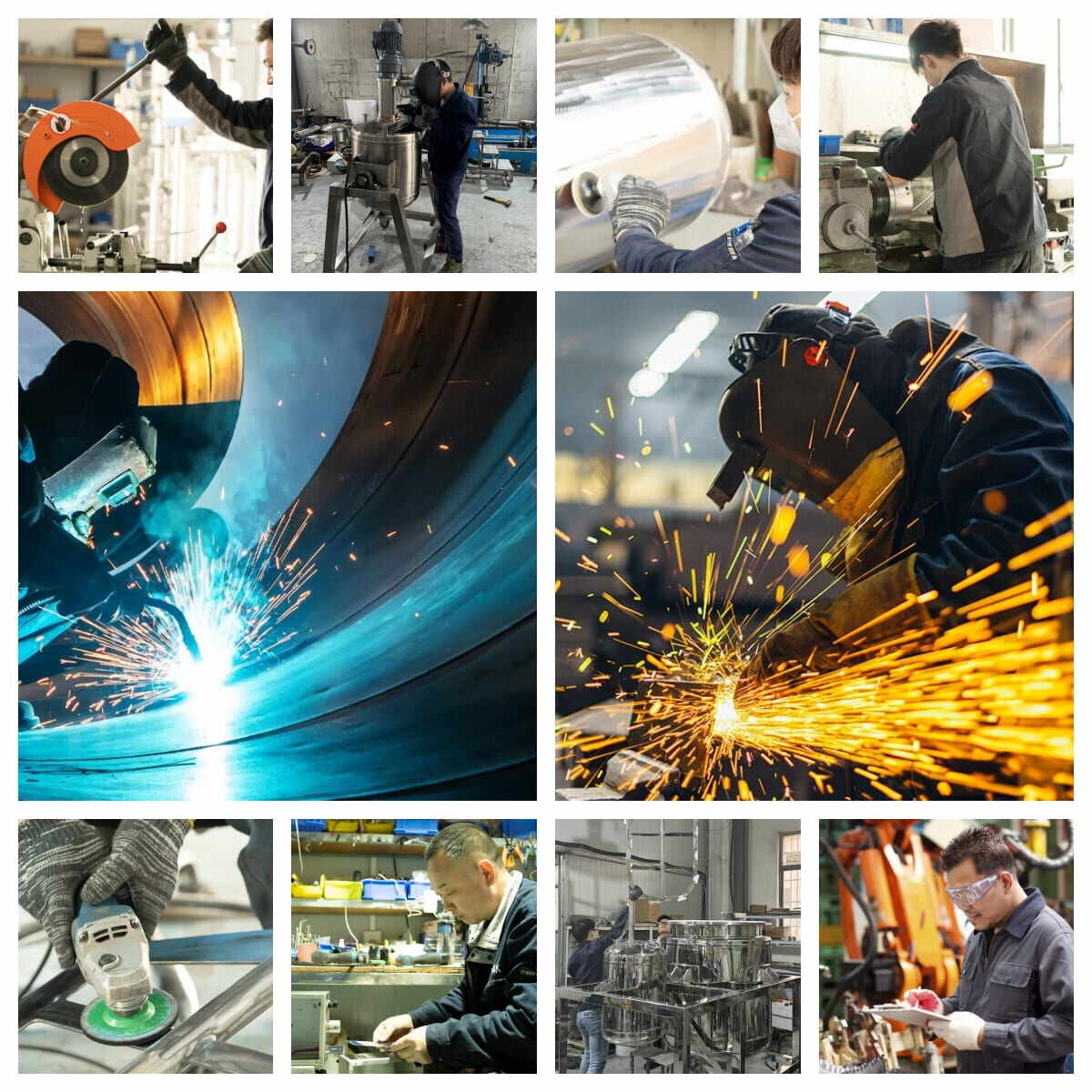Our production workshop is equipped with state-of-the-art facilities designed to ensure the highest quality standards for stainless steel equipment. The production process for stainless steel equipment includes several key steps, each of which is cri...

Our production workshop is equipped with state-of-the-art facilities designed to ensure the highest quality standards for stainless steel equipment. The production process for stainless steel equipment includes several key steps, each of which is critical to ensure the quality and performance of the final product. Below is a typical stainless steel equipment production process:
1. Preparation of raw materials
Firstly, choose suitable high quality stainless steel raw materials. Commonly used types of stainless steel include 304 and 316, and the suitable material is selected according to the specific use of the equipment.
2. Cutting
Use high-precision cutting equipment, such as laser cutter or water cutter, to cut the stainless steel sheet into the required shape and size. Waterjet cutting technology uses high-pressure water and abrasives to cut stainless steel precisely, ensuring neat edges and minimal material waste.
3. Forming
The cut stainless steel sheet is formed into the required parts by bending, stamping and other forming processes. The forming process requires the use of professional bending machines and stamping equipment to ensure that the size and shape of the parts meet the design requirements.
4. Welding
The moulded parts are assembled together by welding. During the welding process, ensure that the weld seam is firm, even and free of porosity and cracks.
5. Polishing
After the welding is completed, the equipment is polished. Polishing not only enhances the appearance of the equipment, but also increases its corrosion resistance. Use different grits of polishing compounds and polishing tools to gradually improve the surface finish.
6. Inspection
After polishing is completed, the equipment is thoroughly inspected. The inspection includes dimensional measurements, weld quality, surface finish, and so on. Ensure that all the indicators of the equipment are in line with the design requirements and quality standards.
7. Cleaning
After the inspection of qualified equipment will be cleaned to remove the surface oil, dust and polishing residues. The cleaning process uses professional stainless steel cleaning agent to ensure that the equipment is hygienic and clean.
8. Assembly
For the equipment to be assembled, the parts will be assembled in accordance with the design drawings. During the assembly process, pay attention to the firmness and sealing of each connection point to ensure the functionality and safety of the equipment.
Should any of our equipment catch your interest, please don't hesitate to reach out for further inquiries. Please contact us at [email protected]. Our dedicated team is here to assist you with any inquiries you may have.